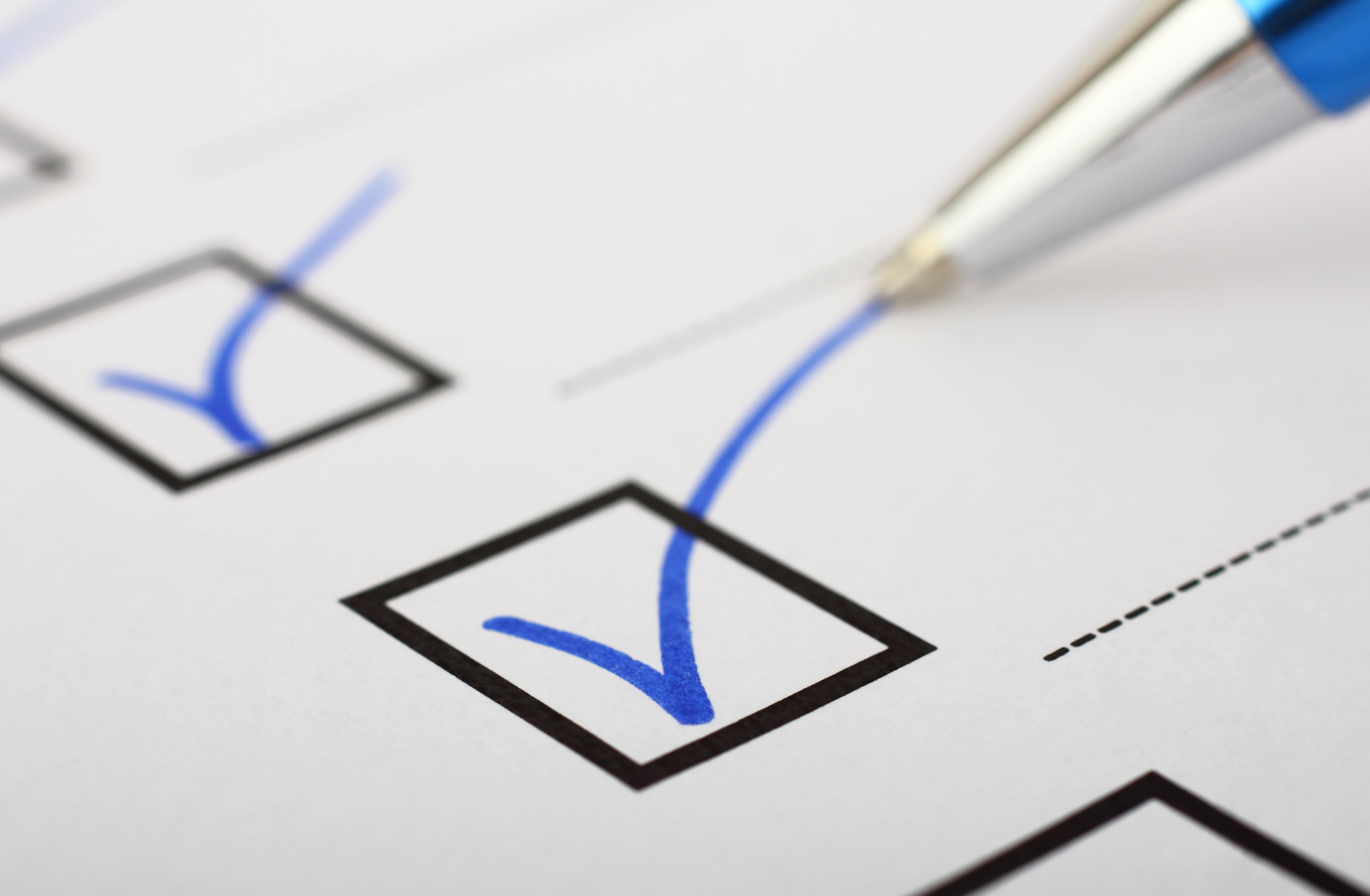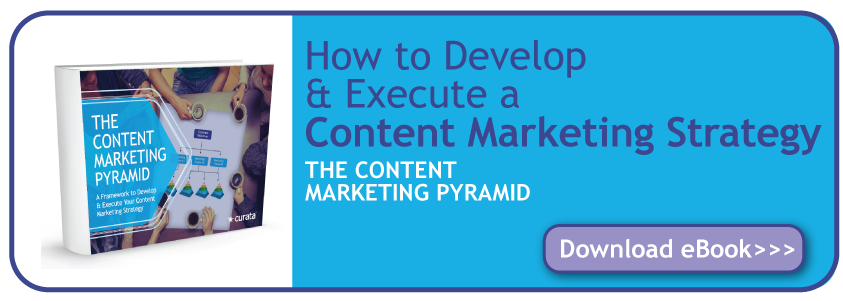- Share Content Marketing Funnel: How to Create, Measure and Optimize on Facebook
- Share Content Marketing Funnel: How to Create, Measure and Optimize on Twitter
- Share Content Marketing Funnel: How to Create, Measure and Optimize on Linkedin
- Share Content Marketing Funnel: How to Create, Measure and Optimize via email
Any content marketing strategy will be seriously hindered if the rest of your marketing team doesn’t see its value. But only eight percent of marketers consider themselves “very successful” or “extremely successful” at tracking content marketing ROI, according to the LinkedIn Marketing Technology Community.
You can ensure your content marketing is helping your company succeed by mapping your content strategy to a content marketing methodology like the content marketing funnel.
Using a methodology like a funnel as the foundation for your content strategy can clarify your direction and simplify your team’s goals. Content marketing methodologies include the buyer journey, content marketing funnel, content marketing framework, and content marketing pyramid.
While there are other common methodologies in the content marketing space, the content marketing funnel is one of the most popular. This post provides more information on what the content marketing funnel is, how to create content that maps back to its stages, and how to optimize your content for it to help you achieve your goals.
What Is the Content Marketing Funnel?
According to Single Grain, the content marketing funnel is a system that takes as many leads as possible through a step-by-step content flow. It then converts them into actual customers who pay for your products or services. The four stages of the content marketing funnel are:
- Awareness
- Evaluation
- Purchase
- Delight

While most people don’t move through these phases in a linear path, having a content marketing funnel model can help your content marketing strategy. A content marketing strategy helps answer the following questions:
- What type of content should I create?
- How do I measure success for this piece of content?
- Should I repurpose this content?
- Are their holes in my content strategy?
This post walks you through all stages of the content marketing funnel and teaches you how to map your content to drive traffic, leads, and ultimately—revenue.
Awareness Stage Content
The first stage of the content marketing funnel is awareness. In this phase you want to attract and educate your audience on your topic.

To determine if the content created for this phase is succeeding, answer the following questions:
- Is it generating a high number of shares and views?
- Are the people sharing and viewing the content part of your target audience?
- Are they interested in the content and converting on it?
Marketing resources across the web suggest that creating for this stage of the content marketing funnel is best in the following formats: ads, social media posts, infographics, and videos.
While these content types work well for awareness stage content, not all audiences are the same. Look at your metrics to analyze which content performs the best at this stage. Metrics you can use to determine if your content for the awareness stage is performing are total shares, views, time on page, scroll depth, and bounce rate.
A Bird in Hand…
 Andy Crestodina of Orbit Media studios explains the importance of creating value at this stage:
Andy Crestodina of Orbit Media studios explains the importance of creating value at this stage:
The most valuable audience, at least for B2B marketers, is your current prospects. So your most valuable content is something you make specifically for these people and send to them directly.
Create a piece of content that answers top questions for your current prospects and you’ll get value from it even if no one else ever reads it. Plus, you can share it with the next prospect who asks that question.
You may have thought that visual content might be best for this category. Curata CMP analytics told us a slightly different story. Our long-form blog content performed the best for shares, views, and time on page.
From there, we determined which posts to heavily promote and optimize, which new keywords needed targeting, and how to develop content for this stage of the funnel moving forward.
You can use the following platforms to determine if your content marketing works at the awareness stage:
Evaluation Stage Content

The evaluation stage is when potential buyers determine the legitimacy of your company, develop trust, and decide if they need your product. Andrew Raso of Online Marketing Gurus describes the evaluation stage as when:
People are doing heavy research on whether or not your product or service is a good fit for them
A famous example of evaluation stage content is Nestle’s Toll House chocolate chip recipes. Nestle Toll House released recipes to the public, including their own chocolate chips as a primary ingredient. This validated Nestle Toll House as the go-to-source for all things chocolate chip-related, and also pointed consumers to their product.
Determine the success of your evaluation-stage content by answering the following questions:
- Are my contacts converting on this content?
- Is this content generating leads?
- Is this content influencing leads?
Generally, this means creating white papers, case studies, webinars, or blog posts. Curata’s content team looks at leads generated and leads influenced to determine which content performs the best.
Need More Leads
However, there’s a common mistake to be wary of when looking at metrics like these, as Anna Hrach of Convince and Convert explains:
One of the biggest mistakes marketers make when measuring content is automatically assuming that correlation implies causation. We see two trend lines headed in the same direction, so we automatically assume they have a direct relationship. That unfortunately tends to lead to misguided conclusions and forced connections that aren’t always there to begin with.
Not surprisingly, white papers, templates, and guides are great for racking up leads influenced and leads generated.
To learn more about lead generation, Curata tested content type, topic, and distribution method to get a clearer idea of what was working and how to promote our content.
Other platforms you can use to determine if your content marketing work at the evaluation stage:
Purchase Stage Content

The next stage of the content marketing funnel involves convincing your audience that a purchase is the smartest step. The goal is to create content that results in closing business. Questions you should be answering about your content in this stage include:
- Is this content influencing revenue?
- What sort of pipeline is this content generating?
- Is this content influencing pipeline?
Typically, the best formats for this stage are reviews, questionnaires, self-assessments, product sheets, and calculators.
At Curata we use our Curata CMP software analytics to determine the efficacy of content at this stage of the content marketing funnel. (Only 30 percent of leading marketers feel they are effective at measuring content marketing’s impact on the bottom of the funnel.) We’ve also taken steps such as building out our G2 Crowd page and updating our product sheets as a result.
Another example of popular purchase-stage content is Progressive’s side-by-side insurance comparison tool. Users are able to look at quotes and compare Progressive against competitors.
If you’re looking to drive results in the purchase stage of the funnel, use these tools:
- Curata CMP
- Kapost
- Contently
- Bizible
Delight Stage Content

The last, frequently overlooked stage in the content marketing funnel is delight. This is especially important for B2B companies with a subscription-based model. This stage of the funnel has several goals.
Content Marketing Institute founder Joe Pulizzi explains why this stage is important:
Marketers don’t realize that the most important part of this process is not the content. The asset we are trying to build is the audience… so everything should revolve around building a loyal audience that will ultimately behave in a way that will help your business.
Curata recommends talking to your customer success team to help determine exactly what your KPIs are for this stage of content. Consider goals for your delight stage content such as increased product usage, renewal rates, online interactions, referrals, case studies, and user generated content.
There are a variety of content types that work well for this stage. These include product guides and educational materials, member-exclusive content, forums and chat rooms, special offers, and giveaways.
The Curata marketing team often partners with our customer success team when creating this type of content and tags it accordingly in Curata CMP. One example of a successful content piece is our CCS use-case guide.
Other examples of content that delights can include anything from a personalized email to offering “priceless surprises” to your customers, like MasterCard did.
Tools to help ensure your content will succeed at the delight stage of the funnel include:
- Salesforce
- Curata CMP
Go Beyond the Marketing Funnel
Actionable Marketing Guide Chief Content Officer Heidi Cohen advises not just creating content for the funnel. Maximize its usage by making it available at all relevant touch points.
When creating content for the purchase process, think beyond the funnel. To get the maximize value for your content investment make your content available at every touchpoint where it’s relevant. This includes post purchase, something many marketers forget.
Aligning your content strategy and editorial calendar with the content marketing funnel helps ensure your content is used to its maximum potential. You will gain a clearer idea of your strategy, increase your content’s efficacy, improve ROI, and align your content with the overall team’s marketing strategy.
For more on improving your content marketing strategy, read Curata’s Content Marketing Pyramid eBook, a framework for developing and executing your content marketing strategy.





